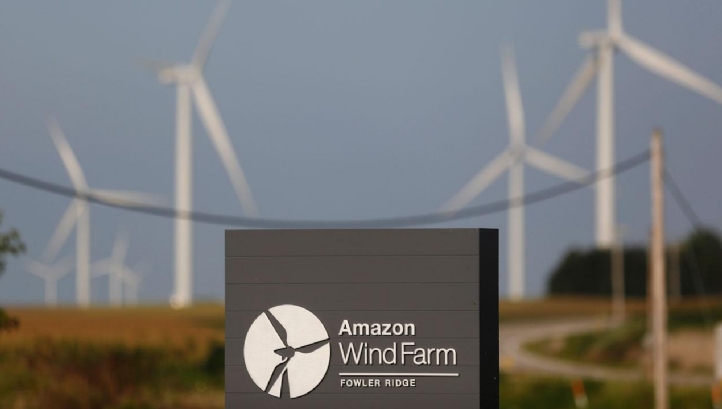E-commerce giant Amazon has signed a trio of agreements to support three new large-scale wind energy projects, as it strives to meet its long-term aim of sourcing 100% renewable power globally.

The first of the projects, in Donegal, Ireland, is set to be the country’s first large-scale wind farm to operate without government subsidies
The first of the projects is a 91.2MW wind farm in Donegal, Ireland, which is being developed by Irish renewables firm Invis Energy and is expected to begin generating clean power by the end of 2021. Amazon will purchase all of the energy generated at this unsubsidised facility.
Amazon will source a further 91MW of wind power from an onshore project in Bäckhammar, Sweden, which is slated to become operational before the end of 2020, and an undisclosed amount of clean energy from the Tehachapi Mountains wind farm in California – a 47MW facility due for completion in 2020.
Once all three projects come online, they are expected to generate more than 670,000MWh of renewable energy and deliver 1229MW of power to Amazon annually.
“Each of these projects brings us closer to our long-term commitment to use 100% renewable energy to power our global Amazon Web Services infrastructure,” Amazon’s vice president of global infrastructure and customer support Peter DeSantis said.
California State Senator Jerry Hill added: “This announcement from Amazon Web Services is great news, not just for California, but for the entire country, as it reaffirms our role as a leader in renewable energy and allows us to take an important step forward on deploying the clean energy we need to respond to climate change.”
A clean energy journey
The commitment which DeSantis referred to was announced in 2014 and is currently operating on an ongoing basis with no deadline.
Since setting the aim, Amazon has increased the percentage of renewable energy used throughout its global infrastructure to 53% – a transition which has been made possible by investments into 53 wind and solar projects across the globe. Collectively, these projects are expected to deliver more than 3,075,636 million MWh of energy this year.
Some of these projects involve external power purchase agreements (PPAs), such as this week’s newly announced wind farms, while others are onsite. Amazon is currently working to install 20MW of solar panels across the roofs and grounds of its UK fulfilment centres, with many of these arrays earmarked to be complemented with battery storage arrays, for example.
In a bid to encourage other corporates to follow suit and set 100% renewables goals, Amazon recently joined a coalition of almost 100 other companies in signing a declaration which urges governments to set enabling policies that incentivise and increase opportunities for businesses to source renewable electricity. Other signatories include the likes of Ikea, Facebook, BT, Google, Microsoft, H&M and Heineken.
Nonetheless, Amazon has continued to face criticism from green campaign groups over its decarbonisation strategy, with activists criticising the speed of its clean energy transition and arguing that it does not publish enough information on its plans and progress. A Greenpeace report published in February, for example, accused Amazon of having “abandoned” its commitment to renewables by “remaining notoriously opaque” when reporting information regarding its energy use and energy mix.
Sarah George
